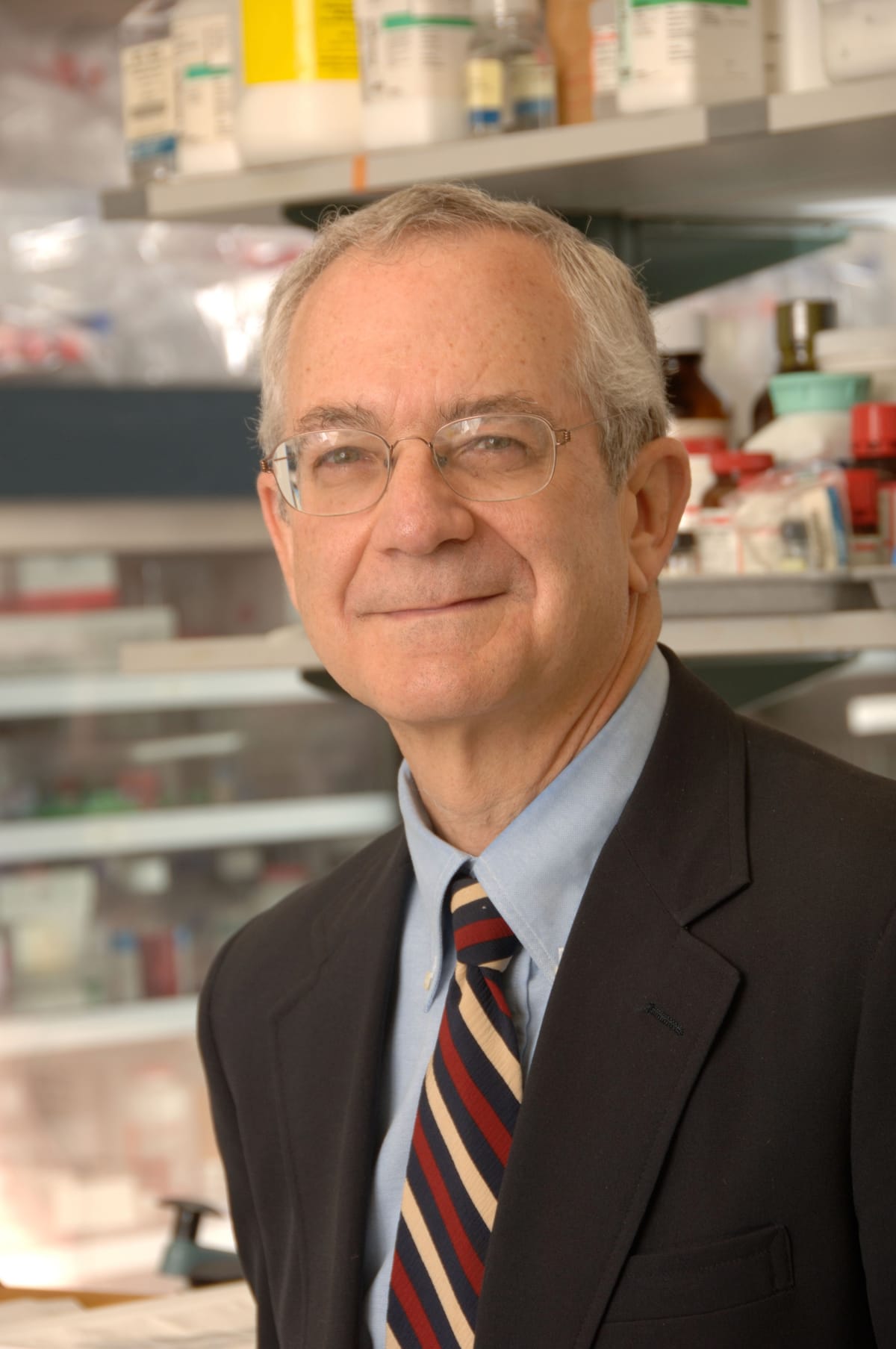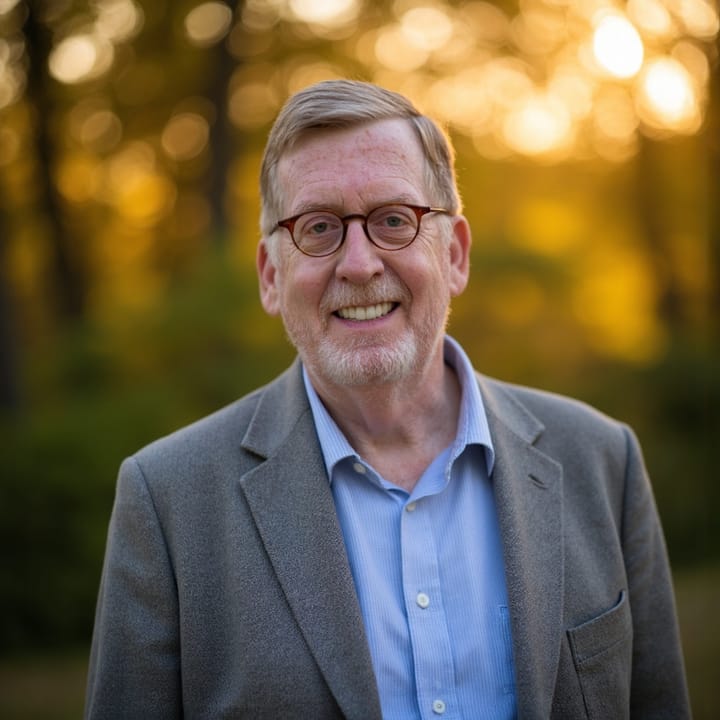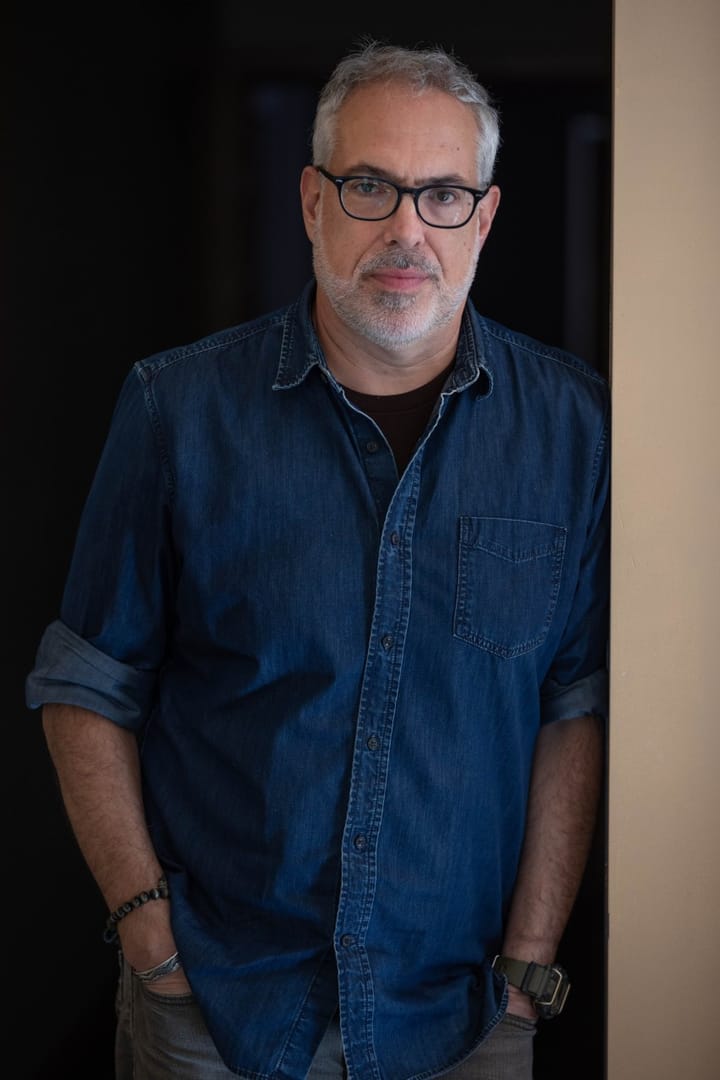Turning the Tides of the AIDS Pandemic — Alumni Profile, Robert Yarchoan ’71
Amid the AIDS pandemic, Robert Yarchoan ’71 pioneered efforts in developing the first effective treatment against HIV. Now, his research continues to shed light on potentially fatal AIDS-related diseases.

To an aspiring medical student, being able to talk to the person who pioneered HIV research at the National Institute of Health (NIH), invented the first effective drug against HIV, and has been the chief of the HIV and AIDS Malignancy Branch at the National Cancer Institute (NCI) since 1996 feels like a dream-come-true — I have never been more excited for an interview in my four years as a student journalist. When Robert Yarchoan ’71 described his journey from Amherst College to a lifelong career in AIDS research, it seemed as if a turning point in medical history was unraveling before my eyes.
From Oceanside to Pioneer Valley
Yarchoan grew up in Oceanside, a town on the south shore of Long Island that he described as “the New York City suburbs” during his childhood. Having the advantage of being close to the beach, Yarchoan “[went] surfing a fair amount” after picking up the sport during high school.
Given that his father was a dentist and his mother was an army nurse, one would think that Yarchoan’s decision to pursue a path in healthcare was inspired by his parents. However, Yarchoan told me that his parents took a fairly “hands-off” approach and didn’t push him to do anything in particular. Becoming a physician was something that he “always knew he wanted to do,” even before coming to Amherst College.
“I periodically read life statements from [college students] applying to our laboratory, and a lot of them describe some formative personal experience that inspired them,” Yarchoan said. “They had a sick close relative, for example … That really wasn’t the case with me.”
At his local high school, Yarchoan recalled encountering “a lot of really bright kids” who went on to Ivy League schools and other prestigious colleges, including Amherst. When it became his time to apply, Yarchoan toured all the liberal arts colleges around New England and fell in love with Amherst.
“I wanted a small liberal arts college and just had a better impression of Amherst than the other schools we visited,” Yarchoan said. “Not as socially conservative as Dartmouth [College] and not as isolated as Williams. I had a very good feeling about Amherst … and applied early admission.”
“Impossible” Essays, Tumultuous Times, and Coding in the Converse Basement
At Amherst, Yarchoan pursued a biophysics major because he found biology at the time “very un-quantitative,” and also didn’t want to specialize in either chemistry or physics. The only two biology courses he took were genetics and biochemistry, which were “as quantitative as [he] could get” at that time. Hoping to become a physician, he found the biophysics major lined up fairly well with pre-med requirements. On the other hand, his favorite course was physical chemistry, a subject that inspired him to write a thesis investigating molecular energy in various conformations.
When asked about his most memorable academic experience, Yarchoan vividly recalled his struggle with the required first-year English course — English 11 — part of the standard freshmen curriculum Amherst had then. “When Amherst had a fixed first-year curriculum, the English majors struggled with physics, and the science majors struggled with the literature courses here,” he joked. According to Yarchoan, the course was so rough that “some English major at the University of Massachusetts, [Amherst]” wrote a book on how psychologically brutal it was.
“Basically, we had to write three papers a week on sort of impossible subjects, and then [we’d] sit around and critique them in class. And I had a very, very irascible [and] tough seminar leader [who] was actually legendary during his time,” Yarchoan said, referring to Samuel Williston Professor of English Emeritus Theodore Baird.
However, greater struggles loomed ahead. Yarchoan attended Amherst when the Vietnam War was raging — a time when students’ utmost concern was getting drafted to the frontline. Some of his fellow students, he said, had left for Canada, became conscientious objectors, or even tried to obtain a medical deferment to avoid getting drafted.
“Some people used to fool around and play some sort of ball game on their knees so that they would wreck [them] to get out of the draft,” Yarchoan said. “It was never very effective at doing much knee damage, but people would do stuff like that. Vietnam was really on everyone’s mind at the time.”
In April of his junior year, all colleges in the country shut down for the remainder of the semester. A month later, a series of demonstrations at Kent State University led to the killing of nine unarmed students by the Ohio National Guard. Yarchoan remembered a protest had occurred at Amherst College, and some of his fellow students went to larger protests in New York.
“One of the things you have to remember is, I went to Amherst at a time that was arguably more tumultuous than what is happening now, at least on the surface,” Yarchoan said.
Amidst the national chaos, Yarchoan said he was glad to find some peace at Amherst. His fondest memory from Amherst was “sitting around with good friends and discussing what was going on,” at least a bit free from the fear of going to Vietnam that always hung over their heads.
“There was an advantage being in a rural environment in [Western Massachusetts], and being able to think more reflectively about what was going on,” Yarchoan said. “I think the school was spared from some of the chaos that [was] going on elsewhere.”
Yarchoan proceeded to spend his senior year working on his heavily computational thesis in the basement of Converse Hall, on one of the only two computers Amherst had at the time. Each of them filled an entire room; one was reserved for scientific use, the other for administration. The computers’ uses ranged from teaching students how to program in Fortran to analyzing opposing football teams’ defense strategies. In fact, Yarchoan told me that Amherst was one of the first schools to put computing powers into football analysis.
Yarchoan’s thesis was a program that would accurately predict the angles between different atoms of a molecule. He started off using a quantum mechanics approach, and eventually settled on combining the various known forces that affect molecules to figure out the number of molecules in certain conformational states. Needless to say, the amount of computational work made him all too familiar with the bulky machines.
“To program [the computers], you had to run a stack of punch cards through a card reader. You had a machine to punch holes in the cards, and each card was one line of code,” Yarchoan said. “And then there was a separate processor, and … a hard drive with some large hard discs where you could store arrays of data. You had to define the space on the disc where you were storing your numbers … I mean, it was not very user-friendly.”
Cracking the HIV Code
Having enjoyed conducting research at Amherst, Yarchoan thought of becoming an academic physician. He wanted to obtain an M.D. first to “know more about the whole body,” an interest that took him to the University of Pennsylvania, where he attended medical school.
“Moving from bucolic Amherst to West Philly was quite a transition for me, and the medical students were very focused on medical science because we had so many facts to learn,” Yarchoan said. “I was missing having people around that were very well-rounded and liked thinking and talking about a wide variety of different things.”
Despite the intensity of medical school, Yarchoan greatly enjoyed seeing patients during his residency in internal medicine at the University of Minnesota. His call to research never faded, though. Knowing he wanted to pursue academic medicine, Yarchoan interviewed at the NIH for research opportunities and joined a branch that studies immunodeficiency diseases in 1978.
“It was a tough decision, because I wanted to do a subspecialty [involving] the whole body,” he said. “I didn’t want to do something like gastroenterology, where the focus was procedures on a particular organ. I was considering immunology, rheumatology, and hemato-oncology. I also wanted to do something more research-oriented, and one of the professors at the University of Minnesota linked me up with an immunology lab at the NIH where I went for my fellowship training.”
At the NIH, Yarchoan saw many patients with various immunodeficiency diseases. In 1981, one young patient from Baltimore caught his eye: He came down with an “incredibly severe” immunodeficiency, different from anything researchers had seen before. The patient was soon identified as the first case of AIDS ever seen at the NIH. More cases of AIDS also began to appear across the nation.
“Often, untreated AIDS patients would come in with low-grade fever, and sometimes with Kaposi sarcoma, a type of skin cancer associated with AIDS,” Yarchoan said. “But then they would develop a number of opportunistic infections … they would get pneumonia or fungal infections. Some of them actually had some sort of virus-induced dementia … where they had a loss of higher-level thinking.”
With NCI’s Clinical Director Sameul Broder and one of his postdoctoral fellows, Hiroaki Mitsuya, Yarchoan’s team of three set out to find a cure for AIDS — one of the first in the nation to do so. The initial efforts, as Yarchoan described, were “focused and unfocused at the same time.” It wasn’t until 1984 when Robert Gallo, another investigator at the NCI, pinned down a virus — soon to be known as HIV — as the cause of AIDS, giving Yarchoan’s team a better clue of how to proceed.
To cure patients of HIV, any drug developed must effectively block the virus’ self-replication cycle. Yarchoan’s team aimed to target reverse transcriptase — the molecular “scribe” that allows HIV’s DNA to be incorporated into the host’s genome. They first tested a few drugs with reported activity against reverse transcriptase in their lab, then ran clinical trials with patients. Still, recovery seemed minimal, and it came with side effects. Then, the team noticed new discoveries from the British pharmaceutical company Burroughs-Wellcome: a few drugs with sufficient antiviral activity that did not harm normal cells, which were soon sent to the NCI under code.
“Let me just say, at the time a lot of people thought we were crazy for trying to develop a drug against AIDS,” Yarchoan said. “It wasn’t even clear that the patients would get better if you were able to stop HIV replication.”
A Life-Saving Discovery
One drug named azidothymidine (AZT) caught Yarchoan’s attention. He noted that when given to patients via IV, even in very low doses, AZT led to increases in the number of CD4+ T-cells — so-called “sentinels” of the immune system and primary targets of HIV. The increased counts suggested that AIDS patients’ damaged immune systems were in recovery. With an “incredibly flexible” Food and Drug Administration (FDA) that collaborated with Yarchoan, what started as a two-week trial was extended to a six-week trial with AZT administered orally; when results proved satisfactory, it became a six-month trial.
“When we got up to six weeks of treatment, and particularly with the second dose that we used, we found out that the CD4 counts were consistently going up, even if a little bit,” Yarchoan said. “We thought, ‘Maybe this is something.’ There was one patient who had a fungal infection [in] her nails, and suddenly normal nails started growing out. She had basically been able to immunologically fight the fungal infection.”
Nine months after beginning the trials, Yarchoan’s team published the results. In March 1987, AZT became the first FDA-approved drug as a viable treatment for AIDS. What excited Yarchoan even more was that AZT reversed some of the neurological impacts of HIV that resembled symptoms of Alzheimer’s.
“In fact, the neurologic community was very suspicious of this finding, because they didn’t think that any sort of dementia could be reversed,” Yarchoan said. “It turns out that the dementia was from HIV infection of the brain — HIV infects the monocytes in the brain and some other cells.”
Yarchoan’s efforts to combat the AIDS pandemic did not end with AZT’s success. Over the next several years, with the virus developing resistance to AZT, he continued to develop similar drugs within the NCI. The second FDA-approved drug to treat AIDS, Didanosine, turned out to have better effects when given along with AZT, and drove the price of AZT down.
“Thinking back, it has been incredibly gratifying to be part of a team that helped develop therapy that converted AIDS from a death sentence to a treatable chronic illness, and can even block transmission,” Yarchoan said. “This highlights the effect that scientific research can make on health both in the U.S. and throughout the world.”
However, with more people taking AZT preemptively, pharmaceutical companies soon saw the lucrative value of the drug and took charge of developing the next generation of antivirals. This led Yarchoan to another crucial decision — whether to remain at the NCI for more cancer-related research, or to move to the National Institute of Allergy and Infectious Diseases (NIAID), then headed by Anthony Fauci.
“I realized that if I wanted to stay in the [NCI], at a certain point developing AIDS drugs wasn’t going to be the way to go, in part because drug companies are generally better at developing drugs if they put their mind to it,” Yarchoan said. “And also, the focus of the NCI in the long run was going to be cancer. Once we had treatments for HIV, patients started living long enough that it seemed worthwhile to try to develop therapy for their tumors. So I switched the focus of my research to the cancers associated with AIDS.”
Yarchoan settled on researching Kaposi’s sarcoma (KS), a type of cancer that causes lesions on the skin and is often seen in AIDS patients whose immune systems have been weakened. Even though AZT and didanosine reduced the deadliness of AIDS, the effects of KS continue to affect patients throughout their lifetime. A tenured independent investigator by then, Yarchoan has since been working on developing therapies for KS and other AIDS-related conditions such as Castleman disease, which causes enlarged lymph nodes, high fevers, and organ swelling.
Yarchoan told me that he felt like “we’re in a very good place” with AIDS treatment now. Patients who begin treatment as soon as they’re infected and remain compulsive about it could “almost have a normal lifespan.” However, he also noted that there’s always work to be done. Some of the treatments currently used for KS in the U.S. are not yet applicable to low-income countries due to their high cost. In addition, no one has been able to develop a vaccine against HIV.
“When HIV was first found to be the cause of AIDS, it was felt that a vaccine would soon be developed, but that finding effective therapy against the virus was a long shot,” Yarchoan said. “It is ironic that some 40 years later, we still don’t have a vaccine but have effective anti-viral therapy and even drugs that can almost completely block transmission.”
Once a Researcher, Always a Researcher
After 47 years at the NIH, Yarchoan still holds several roles that “all keep [him] busy.” In addition to his continued research and clinical trials in KS, which now focus on potentially fatal secondary inflammations, he also runs NCI’s HIV and AIDS Malignancy Branch with four principal investigators and has coordinated all of NCI’s AIDS and AIDS malignancy research since 2008. With some of the newest technology available for his research, Yarchoan has come a long way from the bulky computers in Converse’s basement.
“We can look at, for example, a biopsy of a patient’s tumor and do RNA sequencing of each of the cells in that tumor. You can get an image of the biopsy, and if you click on any cell, you can see exactly which genes that cell is expressing,” Yarchoan said. “There is all this incredible technology right now that’s available.”
Looking back, Yarchoan described his path from Amherst to the NIH as “a little bit taking advantage of serendipity.” He felt like he just “had to be at the right place at the right time,” and Amherst, among many things, seemed like an indispensable part of his journey.
“I’m not sure I would do things a whole lot differently if I had to do it over again,” Yarchoan said. “Although I probably wouldn’t obsess as much about what to do. I mean, many paths would have been okay in retrospect. I really loved being at Amherst. I have very warm affection towards the school.”
Perhaps this serendipity is what led Yarchoan to offer a rather unique answer when I asked him to offer a piece of advice for Amherst students aspiring to follow his path: “keep grounded and try to find some balance between checking off all the boxes you need to get into medical school and developing as a person. Try to find an area to work in that gives a sense of meaning and contributing to something that you care about.”
And, as we wrapped up this hour-long conversation tracing 40 years of cutting-edge AIDS research, Yarchoan gave me an endearing reminder to enjoy the opportunities around.
“It is also important to find an area that engages you, in which you suddenly find that three hours have passed without you realizing it,” Yarchoan said “Also, serendipity can be very important if you take advantage of opportunities that come up; in my case, it was the opportunity to tackle a new disease.”





Comments ()